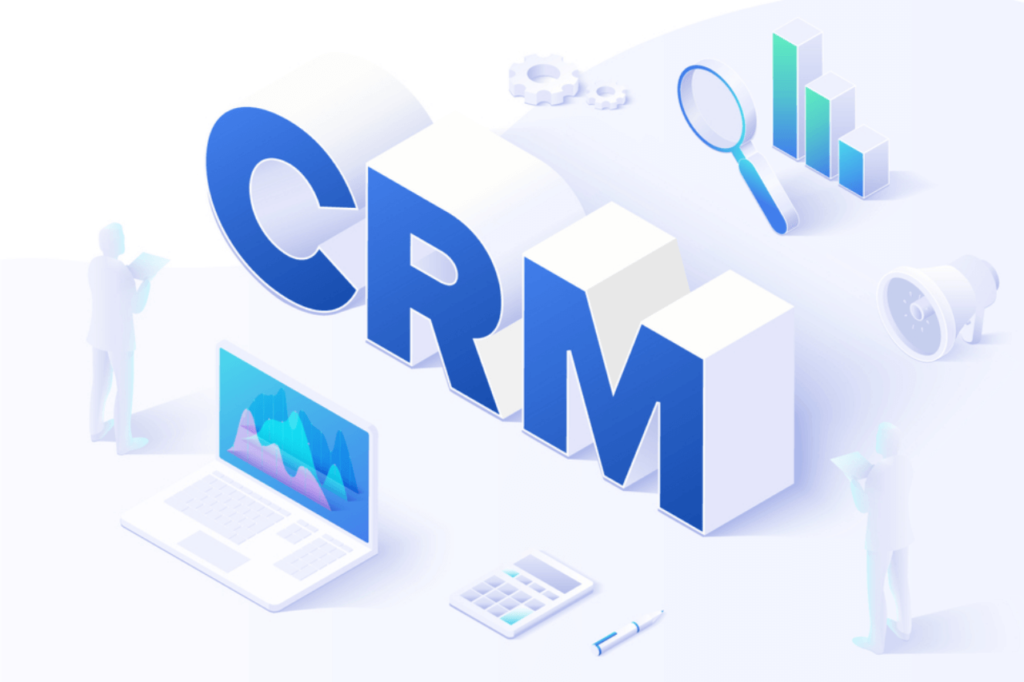There is no doubt that customer relationship management or CRM software has been revolutionary in marketing and sales, and a tremendous milestone for businesses around the world. But one step ahead of what?
Table of Contents
A Blast From the Past
Do you remember the rolodex? Yeah, that contraption that took center stage on every person’s desk. What about large business card folders with paper notes stuck on them? And stacks of logs from a marketer with detailed handwritten notes on prospects’ personal preferences, business relationships, and more. ?.
In today’s world of endless technological advancements, those mentioned above are in fact the predecessors of customer relationship management systems (CMS).
Generating quality leads has always been an art form – the art of good marketing and the foundation of any business. Because, let’s face it, no business – be it a small local entrepreneur or a multi-millionaire business – can survive without its customers. And before customers become customers, they are prospects.
Moreover, you need to convert and retain them so that they become loyal and come back. But to do that, they have to go through a few phases of the marketing funnel. The journey can easily end early, and the connection could chill if the character isn’t approached and fed properly. But it can also lead to a lasting partnership and be mutually beneficial. So your job is to make sure you don’t miss out on quality leads.
Here are some ways that CRM software can improve lead generation.
1. Improves Collaboration and Information Exchange
This process is often managed collaboratively by the marketing and sales teams, but sometimes more people can be involved. It means exchanging a lot of information with different stakeholders. If not handled properly, there can be poor communication between departments. This could result in the loss of potential customers as well as vital information.
For example, qualified leads and hot leads should be approached before cold leads, because if given enough time, they can lose interest and get cold. Whereas if addressed at the right time and with a little more research, cold leads could develop into contacts and opportunities.
1. Optimizes data collection and storage
Fortunately, we live in an age of endless possibilities, lightning-fast software development, and cloud-integrated solutions.
A modern cloud CRM system can help you generate leads, qualify them, rank them, and organize them for top-notch sales results, and in the long run deliver the most satisfying customer experience. And a happy customer is the one who returns. CRM software not only brings together contact information, email addresses, company names, and general information, but it can “ go deeper ” and collect your potential prospect’s public information and preferences across networks. social, a general review of web presence, detailed information about interactions with your platform, and much more.
This way, you can save manpower, time and effort and invest in better communication with customers and personalized experiences when you reach potential leads.
2. Provides Detailed Prospect Profiles and Activity History
In a CRM system, all available prospect information and profile data is gathered in one place and available to all relevant departments. It provides a total history of every purchase, price check, website click,content interaction, every complaint and resolution. Basically you have easy access to all the data ever collected in mind.
Plus, the best part is that the CRM software analyzes everything for you. Real time. All the time, The cloud is accessible 24/7 from any point and location with internet access and can be accessed simultaneously by multiple users.
This gives your business more flexibility and the ability to connect with your customers, show a unique approach to each case, and come up with personalized resolutions.
At the same time, CRM software unveils a whole new world of creative opportunities for your salespeople and marketers, who can now focus their attention on real work and making profits, rather than wasting time and energy. organize and analyze data.
3. Save Time and Identify Actions
Over the years, increased competition has led to an increasing variety of CRM tools and applications, offering a greater selection of services and more ways to track and generate leads.
First of all, a CRM help’s to saves time. For example, marketing companies report that their employees spend around 8 hours per week working on leads, collecting and updating information. And the problem with information on paper is that it gets stale incredibly quickly, which means even more hours spent checking facts, addresses, and all kinds of data.
Your CRM software facilitates the quality of leads your business needs and identifies actions that can help convert and retain them. Using this data in your strategy allows you to easily track leads throughout the sales process, ensuring you successfully meet your sales goals.
4. Helps You Maintain Quality Leads
With modern CRM software, you can capture up-to-date information about prospects across multiple sources and channels. You even have access to some information that prospects have not deliberately shared with you, like recent company activity and public information on their social media profiles.
Once you’ve engaged the prospect, you can keep track of every communication channel you use to reach them, and vice versa. All of this data is stored securely and displayed on the prospect’s profile. The CRM can be configured to collect and display only the information you need and gives you a view of all your interactions with the prospect.
5. Gives You Valuable Insight Analysis
Usually, most CRM software products are equipped with analysis tools that provide detailed information about prospects. You have structured information about which sources work best for you, how your team handles communication, how your prospects’ interests increase or decrease over time. This can help you identify the strengths & weaknesses of your approach.
With a consolidated overview of each prospect and customer, a CRM system is then used to manage day-to-day customer activities, communication and interactions. From a marketing standpoint, that means being able to engage your prospects with the right message, at the right time, through targeted digital marketing campaigns and achieving the best possible results.
6. High Return on Long Term Investment
You might think that investing in a CRM is expensive. And you will be both right and wrong. On the one hand, such a platform allows you to focus your attention on individual customers and provide a tailor-made experience for each of them. And in the long run, it’s worth every penny.
A commonly cited Nucleus study found that for every dollar spent on CRM, returns can reach $ 8.71. Meanwhile, the average return on investment increases with better development and cloud integration of CRM systems.
However, calculating an accurate ROI for a CRM investment can be tricky. For CRM to serve its purpose and for your business to successfully utilize its unlimited potential, it needs to be fully understood and accepted by your team, and it’s easier said than done.
How to set up a CRM in your organization?

Start with an open discussion. Let everyone have their say and share their thoughts on the new software, and be prepared to give opinion. Focus on the pros, but don’t skip potential setbacks. Let your team know that their opinion is valued. There are no bad questions and for this to work, everyone has to be okay with it.
Training
People find it difficult to change their work routine. Especially if they have been at work for a while. Some employees might even wonder how much of a valuable asset they are now that a program takes over some of their responsibilities. Allowing enough time for training is of vital importance. Your leaders need to fully understand how the software works and know that it is there to reduce their workload, help them do more, and give them time to focus on the leads.
Nesting
We all know it’s one thing to have an understanding of theory and a whole different thing to set it in motion. Give your team enough time to explore the new CRM system, experiment and explore. They should also be able to do this while the IT team is supporting them.
Also Read: Top 6 Best Marketing Automation Tools
The transition period should be exciting and non-stressful, and the best way to move forward is to have counseling. Starting a business can be intimidating and a little scary. Fear is normal, but it can be reduced quickly by asking employees to take their first steps with someone who knows what they are doing by their side, this will build confidence, remove the mystery, and reduce fear.
Approve the creative approach
Now that most of the administration is automated, your marketing and sales teams can focus on developing their leads and exploring opportunities. Marketers can use a CRM solution to manage and optimize campaigns and drive journeys with a data-driven approach. This allows them to better understand the inbound sales or lead pipeline, making forecasting easier and more accurate. Sales reps can now decide when is the right time to contact the prospect with the most suitable offer and close more deals.
CRMs give you a clear overview of every opportunity or lead and show you the right path from inquiries to sales.
Wrap
In short, CRM software is more than just a high-tech Rolodex. It’s the present and the future of lead generation. It gives you endless possibilities to grow your business and improve the quality of your customer experience.







